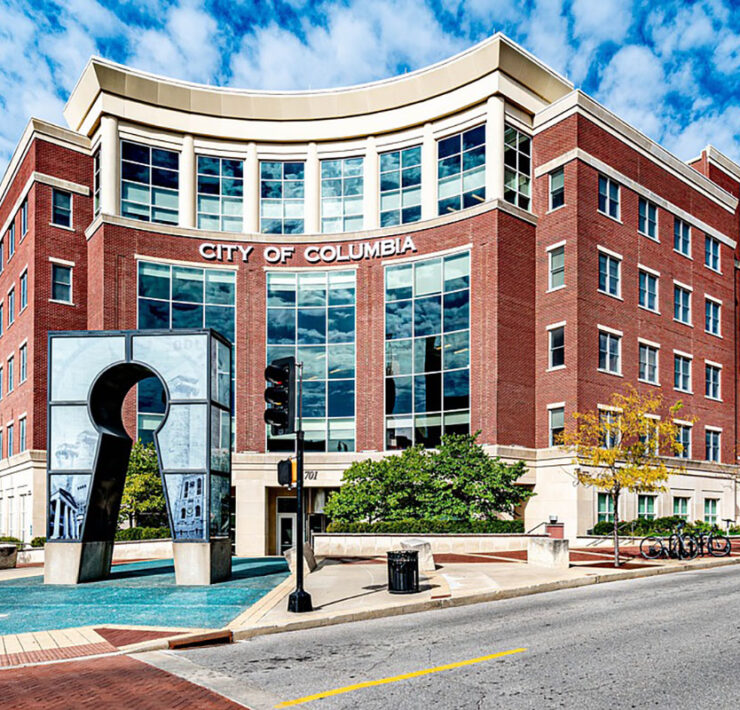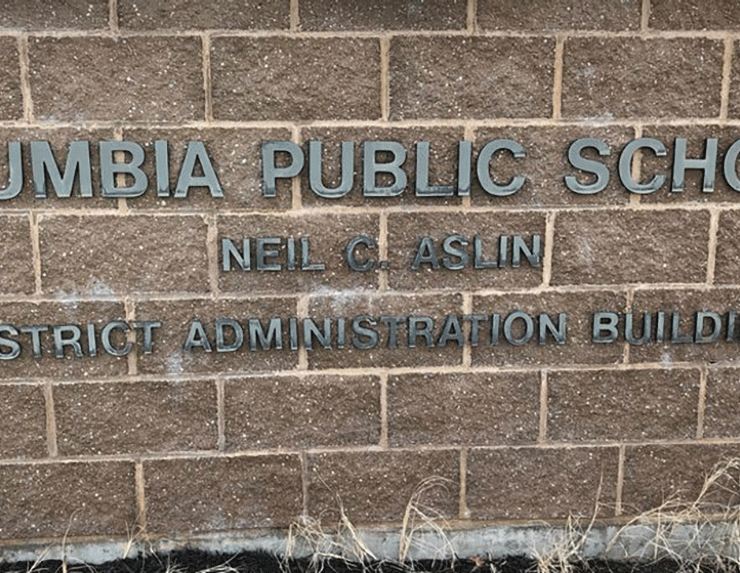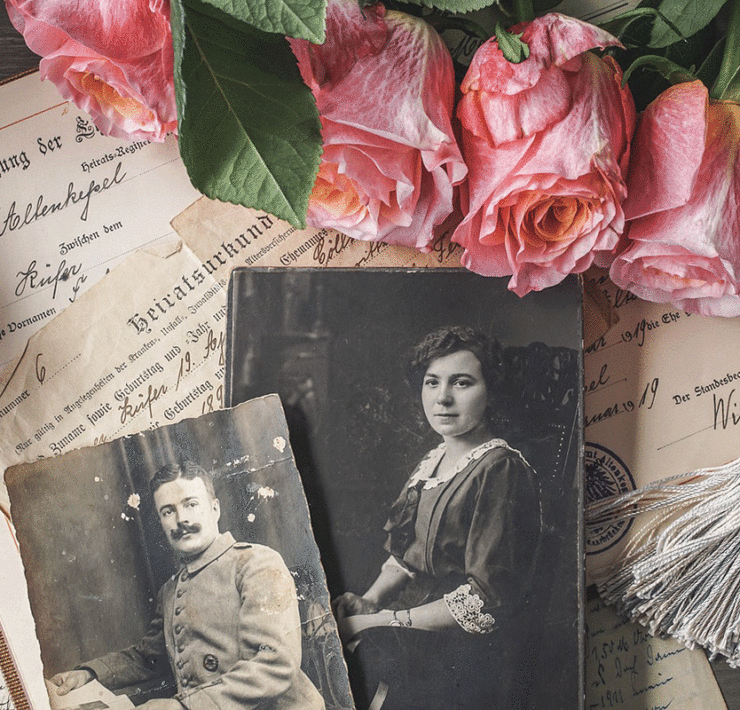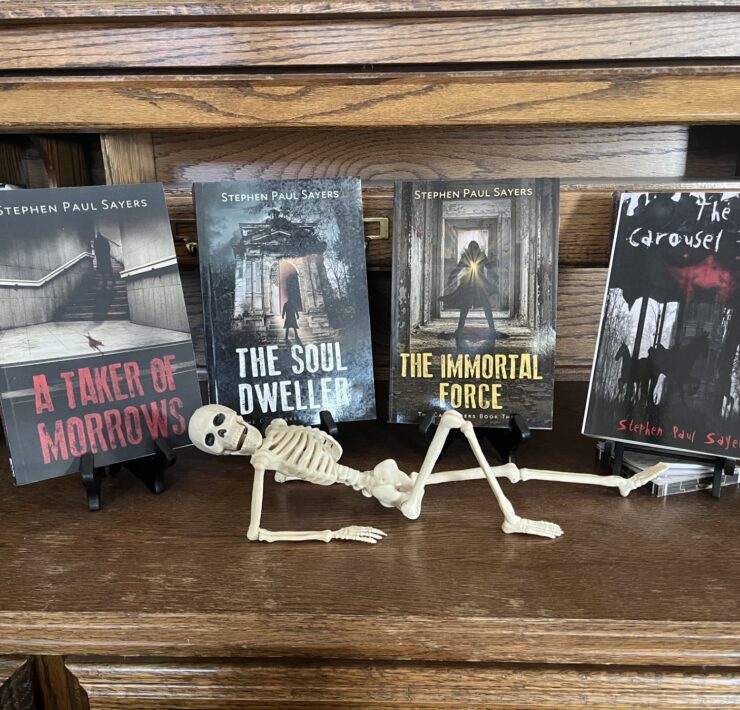A Day in the Life of Animal Control
- "A Day in the Life of Animal Control" originally appeared in the June 2024 "Animal" issue of COMO Magazine
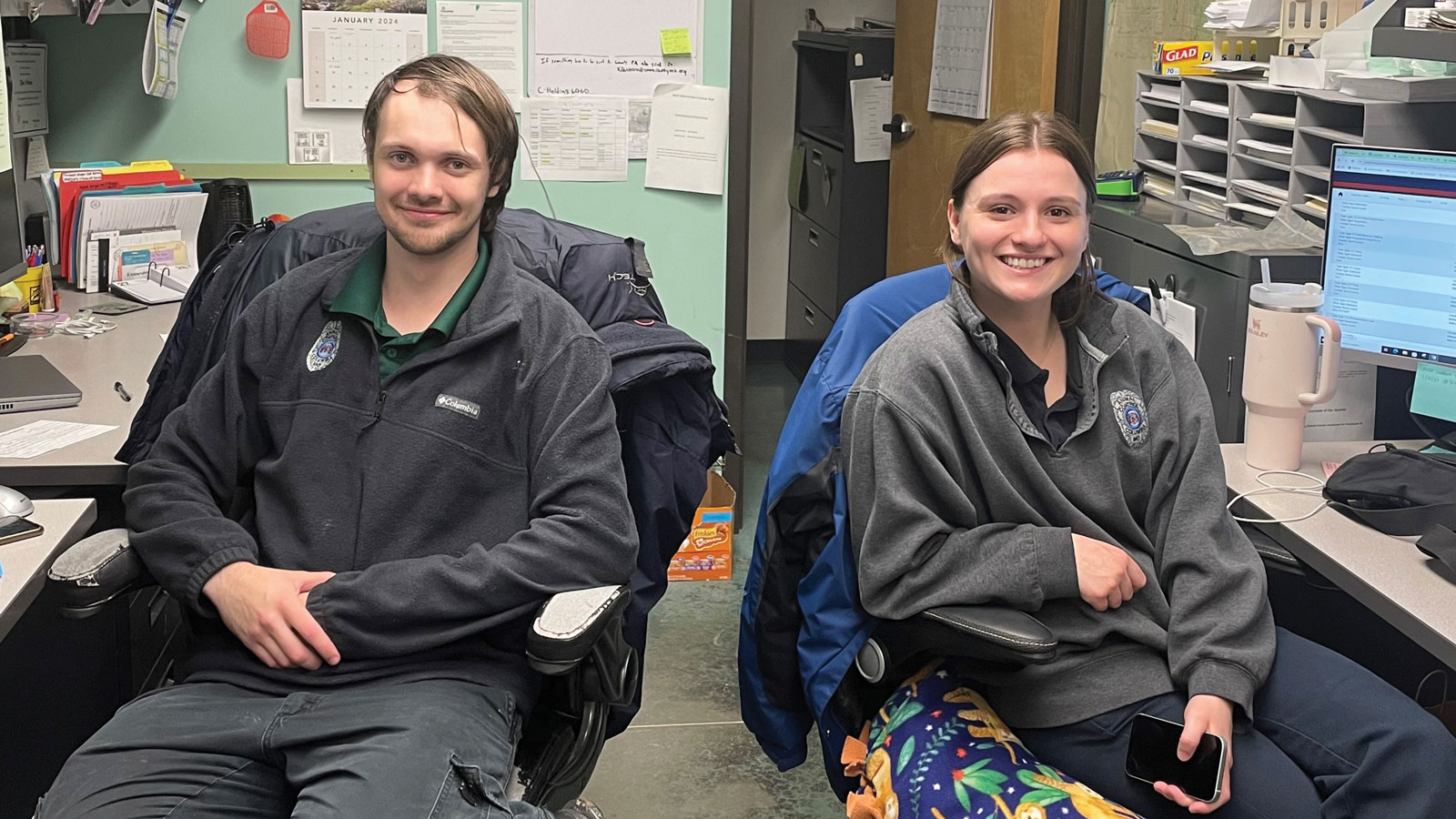
At only 8 in the morning, Kevin Meyers, the animal control supervisor for the Columbia/Boone County Department of Public Health and Human Services, is already busy taking down information from two voicemails, and the phones continue to ring. He quickly guides me back to Animal Control’s office before answering another call, asking questions to fully understand the situation and leaving a note about the calls for the incoming officers.
“Sorry for the rush,” Kevin says before adding with a laugh, “Some days, it just gets a little crazy around here. I guess the best way to do this is to head out and work a case.” We head out to one of the vehicles.
Kevin explains. A neighbor’s dog had been hurt, but the attacking dog was now detained and awaiting Kevin’s arrival. When we arrive, we’re greeted by an enthusiastic black shepherd, waiting for us on a porch — and detained by a helpful neighbor. We learn that the shepherd attacked a neighbor’s dog in the neighbor’s driveway. The woman on the porch informed us that the injured dog and its owner were at a veterinary clinic, and Kevin asks that the owner contact him as soon as possible. Although the shepherd was wearing a vest and a leash, there was no other identification present.
As we walk back to the truck, the shepherd seems eager to hop in. We drive to the Central Missouri Humane Society (CMHS) on Big Bear Boulevard, located north of the Business Loop past the double roundabout notoriously known as the Dog Bone. Animal Control has a small office inside CMHS which allows the officers to process impounded animals. Kevin checks the dog for a microchip but finds none. He photographs the dog and uploads the photo to a website that helps reunite lost Columbia animals with their owners.

“Our primary objective is to reunite the pets with their owners, and we’re fortunate to have so many people spread the word through social media. We appreciate that,” he says. He checks in with the CMHS staff and places the shepherd in one of Animal Control’s designated “hold” kennels.
Although CMHS and Animal Control are separate entities, they work together to reunite animals with their homes or find them new homes. All impounded animals are given a rabies vaccine and a microchip. The owners are charged for these costs when they reclaim their pets. If an animal is not claimed, it becomes available for adoption through CMHS.
Before we leave, Kevin gets a call from the person whose dog had been attacked by the shepherd. Now he learns that the person had also been bitten, which results in more paperwork and a longer hold on the dog for observation. Kevin informs the CMHS staff and adds a bite warning tag to the kennel.
As we get back into the truck, he receives a phone call from one of the animal control officers and they discuss another dog that has attacked.
“It’s going to be a busy day,” Kevin sighs, shaking his head. “Dogs running at large are our most commonly reported offenses. When they encounter another dog, it often escalates. It just makes you worry about what would happen if it was a person or child.”
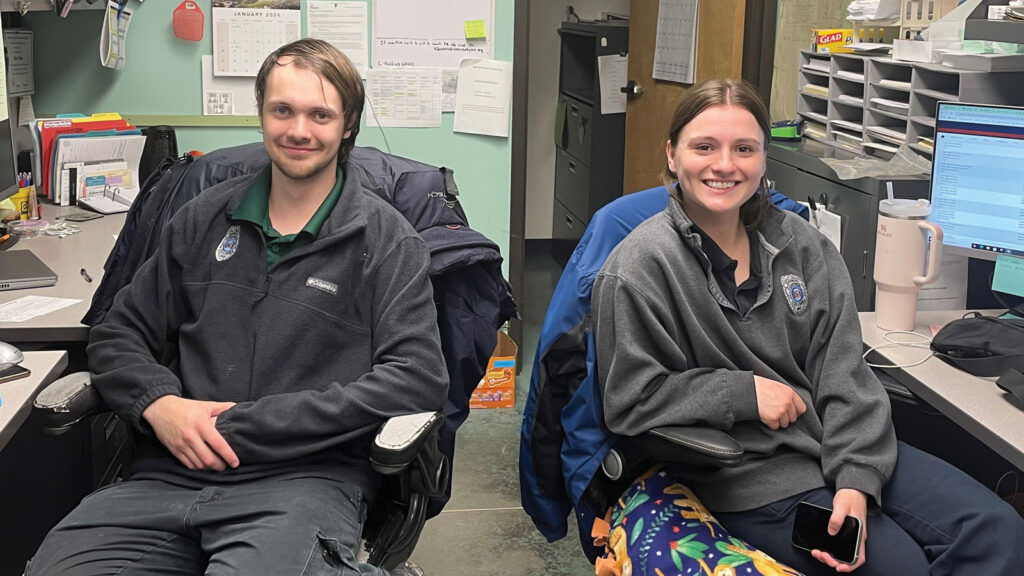
Back at his office, I meet two other officers, Zane Reddick and Emily Smith. Zane is talking with someone regarding a loose dog and Emily is preparing to leave to investigate a report of two dogs running loose. I head out with Emily to speak to the owner of the two dogs. When we arrive at the residence, Emily knocks on the door. A man answers and provides the names and ages of the dogs there — but claims not to be their owner. She leaves her contact information and a card, and as we leave, Zane contacts Emily regarding a complaint about livestock being kept in city limits, and she heads to the address. While chickens are allowed within the city limits of Columbia, other livestock are not allowed. If there are other livestock at the location, Emily will give the owners a warning to remove the animals by a certain date. Our arrival is met with the sounds of ducks, chickens, and geese. No one answers the door, so she leaves a note and takes a photo as possible evidence.
Back at the office, Zane briefs Emily on another dog attack situation. They go to investigate, taking about an hour to detain and transport a dog that has injured another dog and a person. When they return, they rummage through their desk drawers to find something for lunch. They silently eat from their stash of peanut butter, bread, and cheese snacks while writing their morning reports. Emily receives a call back from the owner of two dogs who were running loose and asks some follow-up questions about their vaccinations. She confirms the vaccinations and finds that both dogs are current on their shots but do not have their city licenses.
Emily calls the owner, explains the licensing process, and is promised that the owner will stop by and get the permits on Monday. In the meantime, Zane takes a call about a bicyclist who was chased and bitten by two dogs. The two officers discuss some follow-up that needs to happen from yesterday’s cases, and Emily takes the new call and goes to investigate but comes up empty-handed aside from a Ring doorbell conversation with someone who says they are not the owner.

There are a couple of options when it comes to a dog or cat that has bitten someone, but in most cases the animal is impounded for ten days, although proof of rabies vaccination can make a difference in the length of impoundment. The owner of a dog that has a previous history of biting can be issued an aggressive dog warning, which could result in the owner having to purchase a $350 permit per year. Also, anytime the dog leaves the house, it must be muzzled and on a leash no more than four feet in length.
“People need to be ready for the commitment of ownership and understand what is needed, including what rules have been established where you live,” Zane offers quietly at the animal control office as he relays one of his job’s biggest challenges. Emily agrees but also adds, “Please spay and neuter your pets and get them microchipped.” Both agree that socialization is vital to an animal’s well-being and making sure that they are vaccinated.
Animal Control has seven budgeted positions, but only five are currently filled. The regular office hours are 7:30 a.m. to 5:30 p.m., seven days a week, except on all observed city of Columbia holidays. However, an animal control officer is on-call after hours and on holidays for the following emergencies only: wildlife inside the living areas of a residence (not outside or in a garage), large animals running loose on a major roadway, sick or badly injured animals, vicious dogs that are currently running loose, and animal bites.
As our day winds up, Emily still has another hour to be in the office and there are still two more voicemails that need to be returned. Zane is on the phone, touching base with someone who is missing their dog. Emily and Zane finish their paperwork from the day and get caught up on upcoming court cases.
The day continues much in the same way it started.
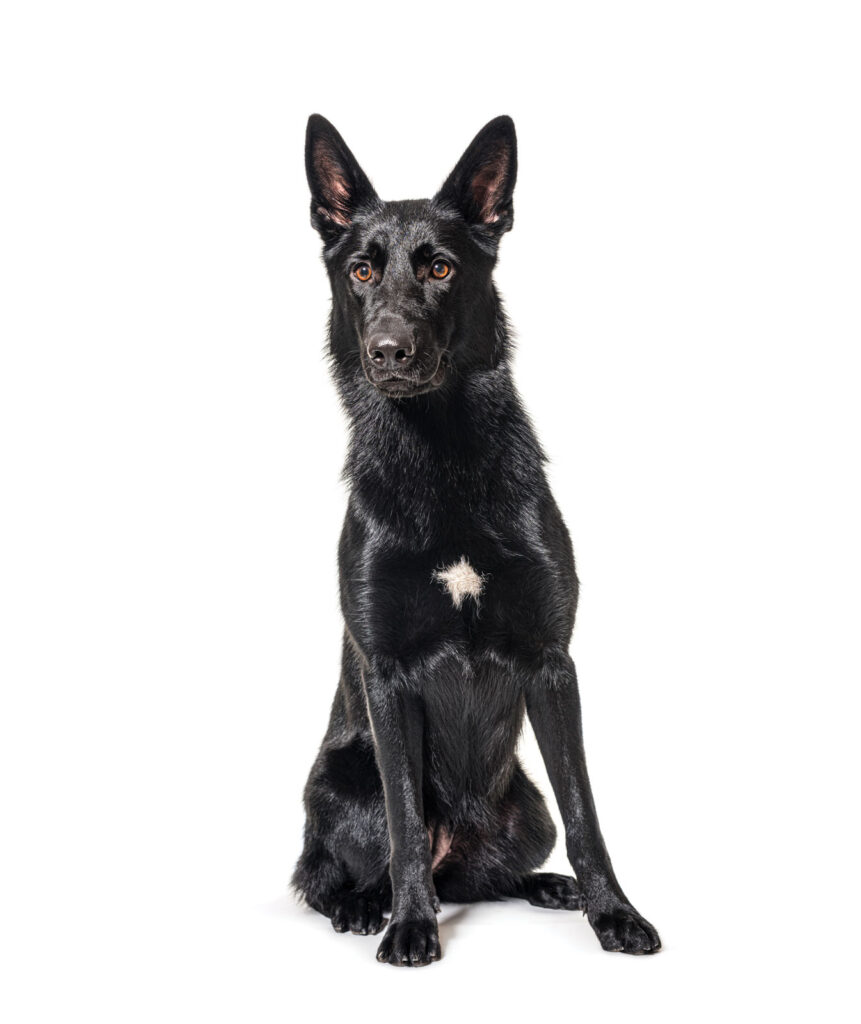
Aim to Behave
For animal control, the city/county health department aims to support responsible pet ownership while ensuring the safety of both animals and the public. The services provided by the division include enforcing animal ordinances for the city of Columbia and Boone County; providing education on rabies and animal welfare; assisting with low-cost or free spay and neuter options; investigating animal complaints; handling animal cruelty complaints; picking up sick and/or injured animals; and providing free rides home for animals with a microchip, a Columbia city license, or any other identification.
Part of the job is knowing the different regulations that pertain to the state, the city, and the county. The towns of Centralia, Hallsville, Sturgeon, and Ashland have their own officers, while Rocheport, Hartsburg, and Harrisburg fall under the county regulations.
“Of course, we are always available to help when needed,” Kevin says, “Especially with emergencies. Being a partner with other organizations is very important to me and the other officers.”



